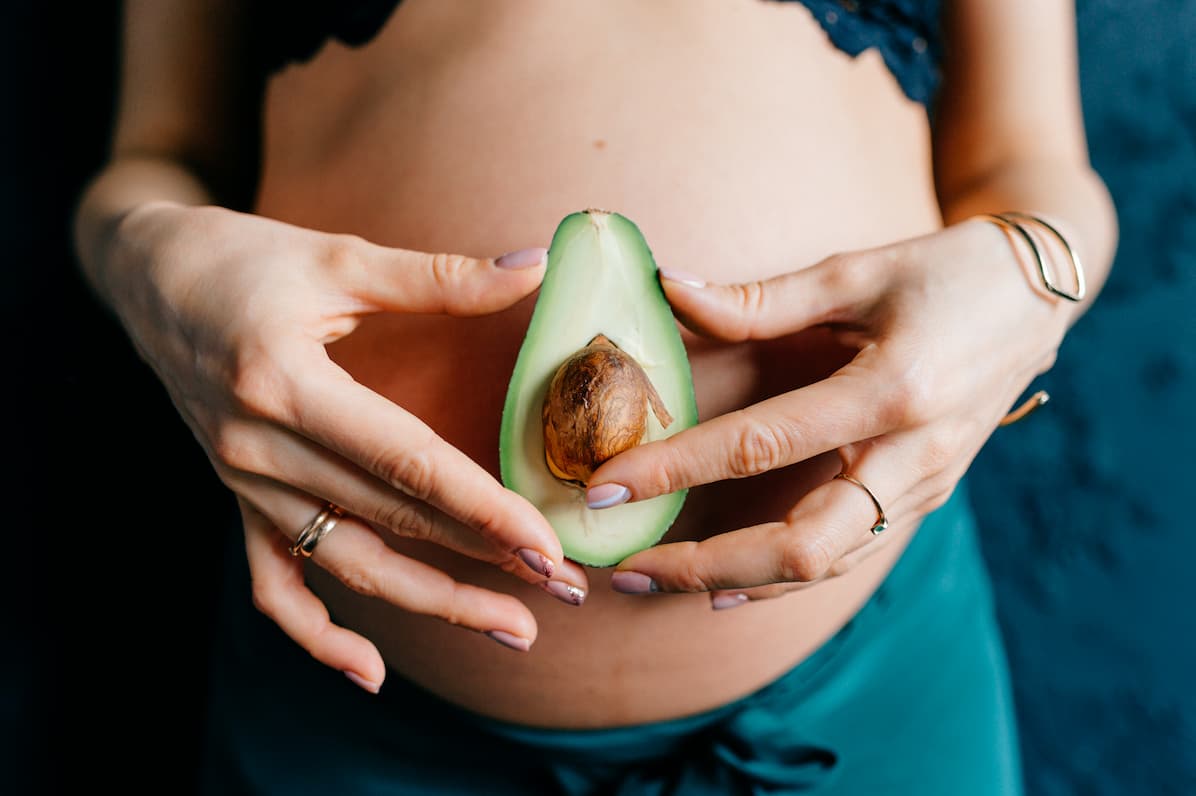Using Food to Optimize Your Next Fertility Cycle
What you eat, and when you eat it, can increase your chances of pregnancy and improve your health.

The timing of when you eat a particular food during your menstrual cycle is just as important as the foods’ nutrition benefits. When it comes to improving your fertility outcome, it’s not only the healthy fat of an avocado… it’s WHEN you eat it that makes the most impact.
Knowing how and when to use food as “fertile medicine” is the emphasis of the Fertile Foods component of The Seed Fertility Program, a self-paced, online fertility intervention program endorsed by California Fertility Partners, is designed to empower women who want to feel more involved in their fertility cycle.
How does it work? How do we use food as fertile medicine?
We need to first understand the predictable monthly orchestration of women’s sex hormones, particularly estrogen and progesterone, which can be supported (or adversely affected) by our food choices.
Whether we’re trying naturally, utilizing IVF, preparing for a donor-egg transfer, or volunteering our wombs for surrogacy, reaching the goal of a successful pregnancy requires that we keep these two hormones as balanced as possible.
When these two hormones are properly balanced and readily available in a woman’s body, her fertility-cycle attempt process can go more smoothly. She will feel more optimistic and stable. More importantly, her egg quality will be noticeably better, impacting the likelihood of creating a normal embryo, and ultimately a healthy baby.
There are four phases of menstruation, the basis for your fertility calendar. What’s happening in each phase reveals which foods you need to incorporate. Within an IVF protocol these four phases correspond to: 1) ovarian suppression, 2) ovarian stimulation and egg retrieval, 3) implantation, and 4) possible pregnancy.
Phase 1 relates to the days you’re bleeding (estrogen is at its lowest). Phase 2 is your pre-ovulatory window, when follicles are maturing and preparing to release a viable egg (estrogen is rising). Phase 3 includes fertilization of eggs with sperm and possible embryo implantation (estrogen and progesterone are both elevated). Phase 4 is your premenstrual window, a time often characterized by imbalanced hormones and mood swings (fluctuating estrogen and progesterone).
The more you stay aware of what’s happening with your hormones in each phase, the more you can support your cycle with nutrition.
During Phase 1, your goal is to assist the cleansing aspect of menstruation and reset your hormones. You may be taking birth control pills or other fertility medication at this time to synchronize your smallest follicles. Here your body is releasing its lining from the prior cycle. Green, cleansing foods containing cellulose (i.e. steamed leafy green vegetables like broccolini or prepared kale) can support the cleanse by reducing unopposed estrogen. Imagine these foods assisting your womb in sloughing the former lining and preparing for the new cycle.
The emphasis of Phase 2 is to support your follicular development by adding foods high in good fats and minerals. These foods (egg yolks, full-fat dairy, seaweed, coconut products and avocados are a few examples) contribute the nutrients egg cells need to mature more readily. Eating good fats and minerals during the days of your ovarian stimulation supports your body’s own estrogen levels and helps your body respond optimally to the fertility medication. Think, “I’m eating eggs to make better eggs!”
Supporting a successful embryo implantation is the goal of Phase 3. Eating foods that are protein-rich, and that are warmed, will be the most soothing and capable of providing the best incubation experience for vulnerable embryos. Some examples include slow-cooked meat-based broths, soups, stews and curries. Nothing cold or straight from the refrigerator in the days that follow your transfer! Those foods cause cramping.
During Phase 4, fiber-rich, “red” foods will help you maintain hormone balance and create a nourished uterine lining. Red fruits like raspberries and pomegranates, as well as low-sugar trail mix, are a few good snack examples. Red tomato-based meat sauces will be particularly satisfying to women in this phase that has them wondering if their cycle was a success.
Knowing what to eat and when is empowering. It allows you to plan accordingly and use food as fertile medicine to support your body during IVF, while giving you the sense of having more control over your cycle outcome.
Danica Thornberry, L.Ac., DAOM is a doctor of acupuncture and oriental medicine, specializing in women’s reproductive health. She’s the author of “Stick It to Me, Baby!”, the founder of Well Women Acupuncture in Los Angeles and The Seed Fertility Program online. For more information about the 4 Phases and their impact on your fertility, visit SeedFertility.com.


